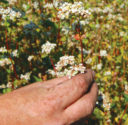Advertise Follow Us
Soil Health
Potential For No-Till Is ‘Unlimited’
No-till is feasible on more than 10 million acres in Ohio, but the path to success varies by soil type.
Read More
No-Till Plots Yield Answers
50 years of cutting-edge research at Ohio State University’s experimental fields have fueled the acceptance and growth of no-till.
Read More
From ‘Walking The Beans’ To Herbicide-Resistant Crops
No-tillers can learn a few things about weed control from the early days of no-till to help them in today’s challenging weed environment.
Read More
Cover Crop Explosion Takes No-Till Back To Its Roots
Legumes, brassicas, grasses and more have re-emerged as a way to help no-tillers reduce input costs and increase yields.
Read More








